Brian Brenner, P.E., F.ASCE, is a professor of the practice at Tufts University and a principal engineer with Tighe & Bond in Westwood, Massachusetts. His collections of essays, Don’t Throw This Away!, Bridginess, and Too Much Information, were published by ASCE Press and are available in the ASCE Library.
In his Civil Engineering Source series More Water Under the Bridge, Brenner shares some thoughts each month about life as a civil engineer, considering bridge engineering from a unique, often comical point of view.
December 2023 marked the 50th anniversary of the movie The Exorcist. It was about a girl who was possessed by the devil. The movie had many memorable scenes. The one I remember most was the scene with the bridge.
Early in the movie, before the pea soup and whatnot, the cinematographers needed to establish the site of the girl’s family home in Washington, D.C. To do so, they showed a framing shot hovering above the Potomac River. The location was not a sunny, pleasant place, but one that was dark and vaguely sinister, you know – demonic. An evil-appearing bridge was shown at twilight. I am not sure about the reaction of the rest of the audience, but when I watched with my youthful eyes, I thought “Yep – the devil!” There was also some sinister, mournful music accompanying the murky shot.
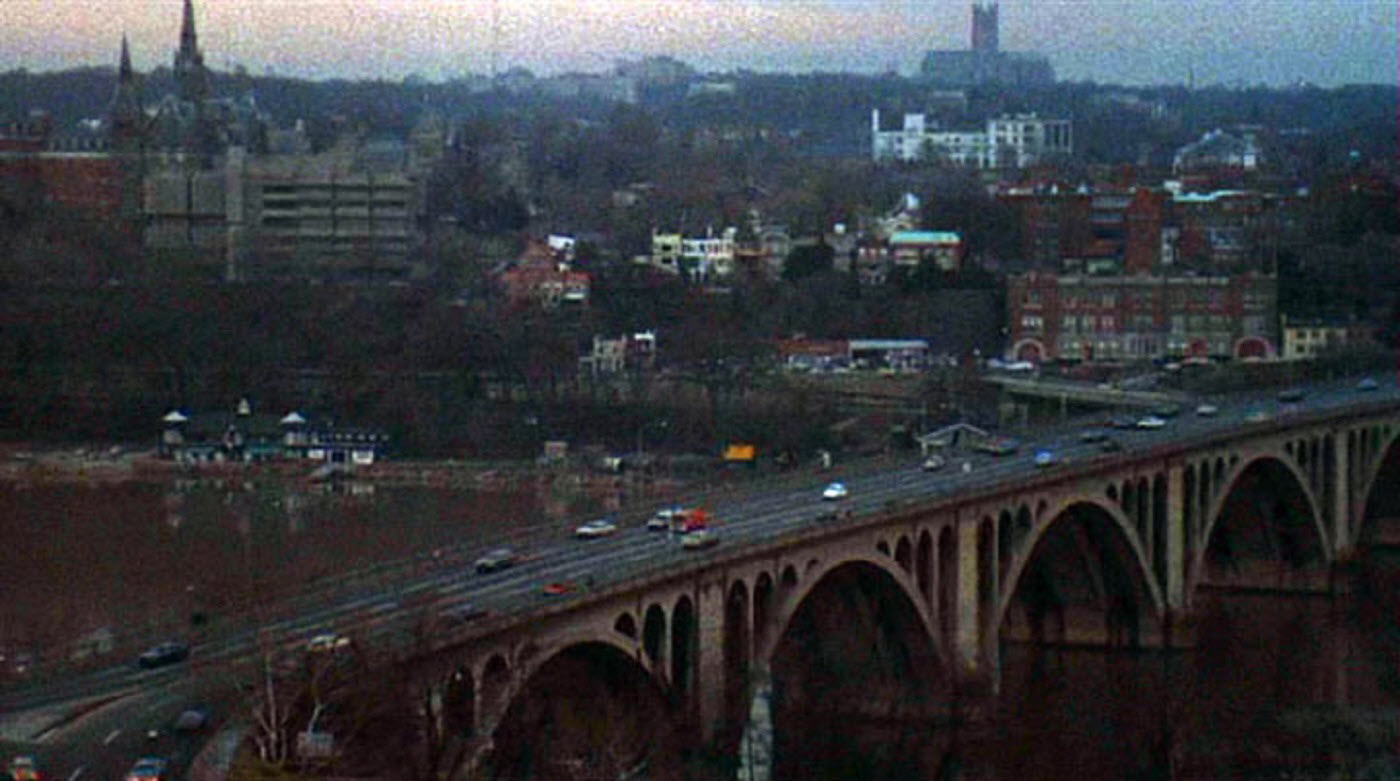
The bridge in question is the Key Bridge, which crosses the Potomac River between Georgetown in northwest Washington, D.C., and Rosslyn, Virginia. The bridge transports U.S. Route 29 across the river. It is not well-known that U.S. Route 29 originally had the numerical designation Route 666.
(OK, the reason it is not well-known is that it is not true. There was no Route 666. However, Interstate Route 66 terminates near the bridge. Coincidence?)
The bridge is a seven-span concrete open-spandrel deck arch completed in 1923. It replaced a series of aqueducts at the same location.
On sunnier days when it is not being showcased in a movie about Satan, the bridge appears like this:
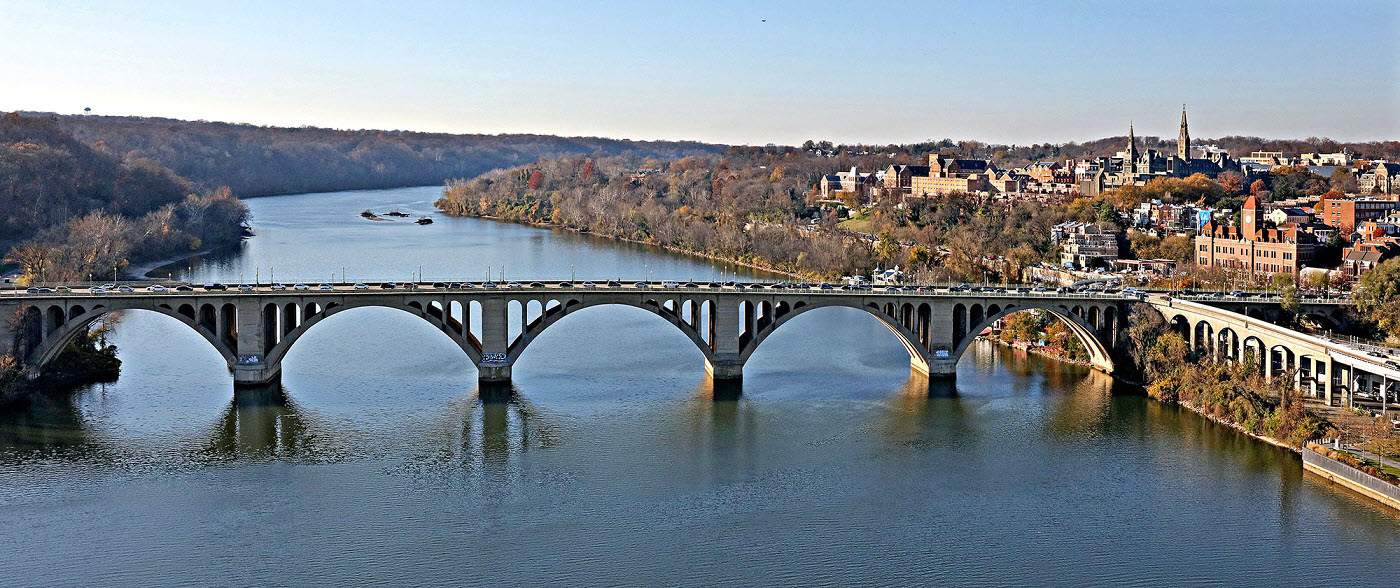 Duane Lempke Photography
Duane Lempke PhotographyIn broad daylight, and without sinister minor-key musical chords playing in the background, the beautiful bridge looks almost angelic. The 1920s detailing is from an era in the U.S. when the economy was roaring and bridges were being built cross-country. The original construction had five spans with each averaging just over 200 feet in length. The arches are not closed off by spandrel walls, but feature a series of mini-arches supporting the deck. The bridge design team included an architect in addition to the usual group of engineers. It was designed in the Classical Revival style, which favors details reminiscent of ancient Rome or Greece. It has a monumental appearance, and the bridge overall is in keeping with much of the federal and monumental architecture of downtown Washington. The structure has a light appearance, although the piers seem too thick and massive in the elevation view in contrast to the more slender arches.
Over the years, the bridge has been subject to many rehabilitation projects. The most visually intrusive was performed in 1987 when the original deck was replaced with a wider, post-tensioned concrete structure. The new deck provided more space for the traveled way, but the overhang cast the arches in shadow and was a bit of an awkward match to the historical structure spanning below.
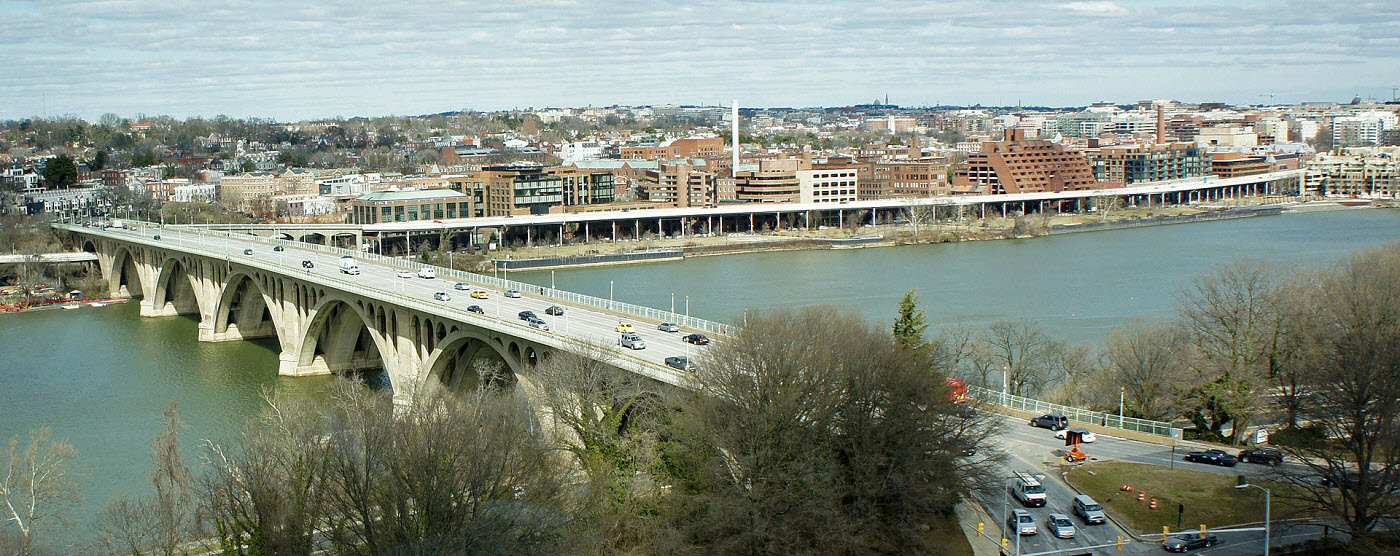 Mario Roberto Duran Ortiz
Mario Roberto Duran OrtizBut still, the Key Bridge is a pleasant, friendly-looking bridge. It does beg the question, how did such a nice bridge fall in with such a demonic crowd? Keep in mind that the bridge does not appear in just one view in the movie, but also as a backdrop for an important scene toward the end at a prominent stairway near the bridge. This stairway is now a place to visit for Exorcist tourists. The site even has an official plaque.
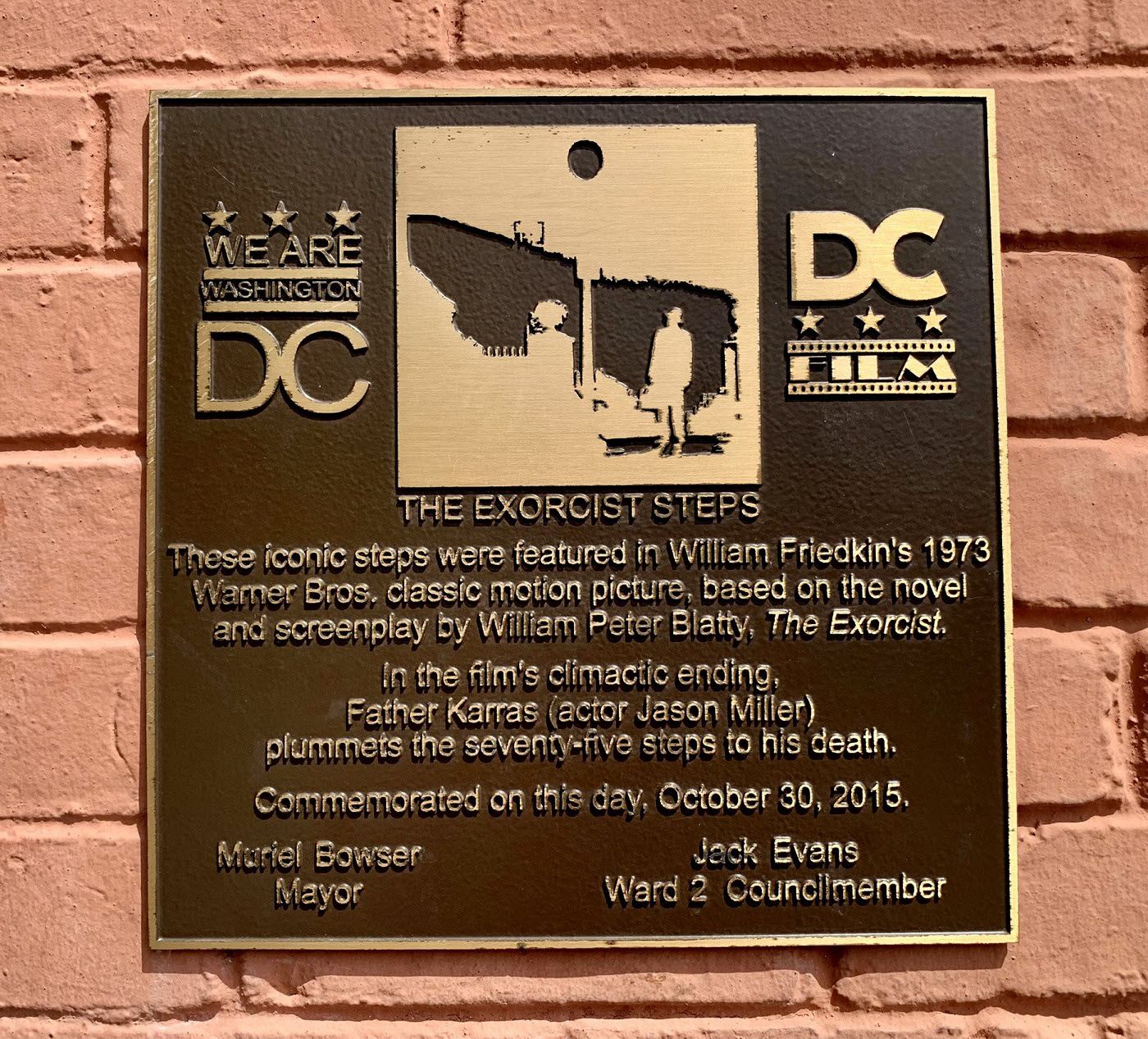
It seems that the answer to the complex question about the company that bridges keep is simple. It is all random. Bridges don’t get a say in choosing their friends because they are not sentient (or alive). Also, they usually do not have friends.
Overall, bridges are representative of humankind’s highest aspirations. They improve the infastructure and serve metaphorically to connect and uplift people’s lives. But bridges are not separate from lower human aspirations, and they can be co-opted to represent those as well.
Fortunately for the Key Bridge, it has moved on from its shallow Hollywood days to serve the D.C. area in a more positive and bridge-like way. The year 2023 was the 50th anniversary of The Exorcist, but it was also the 100th anniversary of the Key Bridge. The bridge has provided a hundred years of successful transportation service, and it is an attractive structure that has graced its environment. Earlier youthful flirtations with Beelzebub have faded with time.
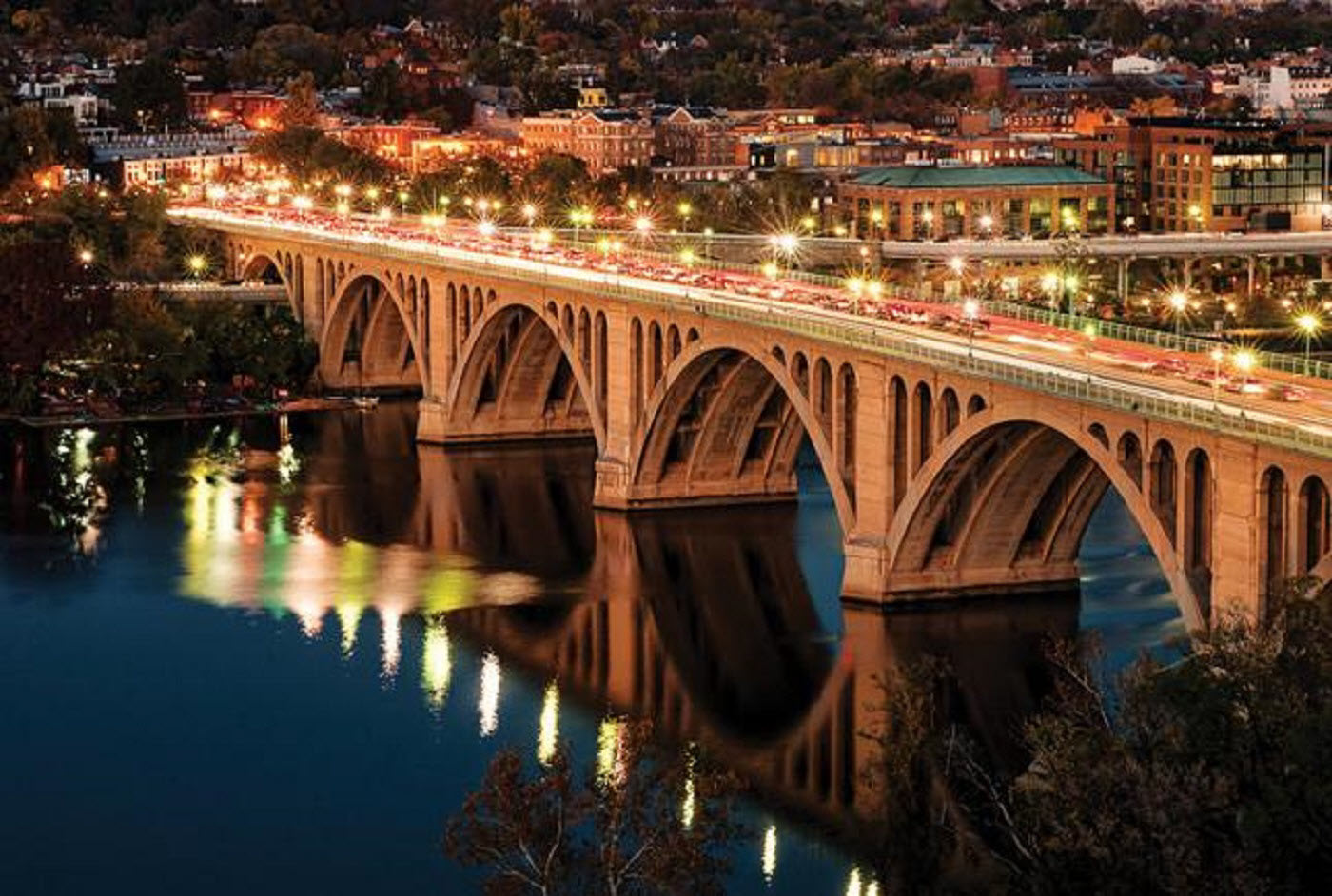 Jeff Kouri
Jeff Kouri More about devil bridges:
An article in Kiwi.com, “6 Devil’s Bridges and Their Legends," describes some old European masonry arch bridges associated with the devil. From the introduction:
“There are some structures in Europe that raised suspicion among the common people. And these six bridges are said to be linked directly to the gates of Hell.
“As unsettling as it sounds, these bridges are believed to be associated with the devil himself in some way. The technology and knowledge used for their construction were so advanced at the time that many considered them to be the work of the devil. Other times, the conditions to complete the bridge were so challenging that it required a monumental effort to complete the construction.”



